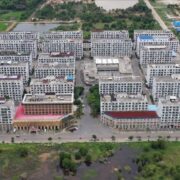Becoming the next data center powerhouse

The Philippines is rapidly emerging as one of Southeast Asia’s most promising destinations for data center investment. According to a report from the US International Trade Administration, it is projected to generate $638.75 million in revenue in 2025, and is expected to grow at a compound annual growth rate of 6.15 percent, reaching an estimated $810.98 million by 2029. Global players, such as ST Telemedia Global Data Centres, Alibaba Cloud, and local telecom giants like PLDT and Globe, are investing heavily in infrastructure to meet surging demand driven by cloud services, fintech, e-commerce, online gaming, and digital government platforms.
The Philippines offers excellent connectivity for regional and global traffic, especially via new and existing submarine cable landing stations in Batangas, La Union, and Quezon. The country boasts a large, skilled, and cost-competitive labor pool, with strengths in engineering, IT, and operations and initiatives like the “Build Better More” infrastructure program, coupled with incentives through the Board of Investments and the Philippine Economic Zone Authority, aim to accelerate construction and reduce setup costs for data center developers.
There is no doubt that data centers can play a transformative role in the economy as they will create high-value jobs in information technology and engineering, enhance local service performance, attract foreign direct investments, and catalyze innovative ecosystems that would support artificial intelligence and smart city infrastructure. With its projected growth and contribution to the economy, this sector is a vital pillar for national digital competitiveness.
As hyperscale providers and global investors look beyond Singapore and Hong Kong for scalable alternatives, the Philippines has the opportunity and potential to position itself as a strong contender by offering strategic advantages that could help it become a regional data infrastructure hub.
However, to take advantage of this opportunity will require tackling various challenges, and an issue commonly cited is high electricity costs and power reliability. Currently, electricity prices in the Philippines are among the highest in Southeast Asia, primarily due to aging infrastructure, dependence on imported fossil fuels, and inefficiencies in distribution. This creates serious constraints for global investors, who rank stable and affordable power among their top criteria when choosing data center locations.
Data centers are extremely energy intensive. For perspective, a 10-megawatt facility consumes roughly 80 gigawatt-hour annually. Based on a 2023 household energy consumption survey by the Department of Energy, average monthly electricity consumption is 266.88 kilowatt-hour. That means a single 10MW data center annually requires the equivalent amount of electricity that 24,974 households consume in a year. There are currently 43 facilities utilizing 129 MW, with the largest facility rated at 20 MW. There are currently plans for 300 MW to be built, with PLDT alone having a long-term goal of achieving a 500-MW portfolio.
In this regard, the Philippine government has taken meaningful steps to increase renewable energy adoption. Major solar and wind projects are underway, and some data center developers are negotiating green power supply agreements with renewable energy providers. However, renewables alone may not be enough to provide the baseload stability that data centers require.
Fortunately, the present government has made the adoption and use of nuclear energy part of its goals in line with the Philippine Energy Plan 2023–2050, which envisions a diversified, secure, and sustainable energy mix that leverages both indigenous renewable resources and emerging technologies, including nuclear energy. With its carbon-free baseload available 24/7, high energy density, and lower long-term operating costs, nuclear energy offers a practical, long-term solution. By embracing a balanced strategy that combines renewables for sustainability and nuclear for reliability, the Philippines can future-proof its digital infrastructure and overcome energy-related investment hesitations.
The Philippines stands at a pivotal moment, but we can’t afford to be complacent. In Southeast Asia, Singapore leads the pack, followed by Malaysia and Indonesia in terms of operational centers. In the second tier, we are behind Thailand and Vietnam in centers that are online and still under construction. The elements are there for us to take advantage of, and with the right mix of infrastructure, policy support, and energy strategy, we have a good chance to establish the Philippines as Southeast Asia’s next data center powerhouse. The question is, are we going to make this goal a reality, or will this just end up on the list of other missed or lost opportunities and find ourselves continually playing catch-up to our neighbors?
—————-
Moira G. Gallaga served three Philippine presidents as presidential protocol officer and was posted as a diplomat at the Philippine Consulate General in Los Angeles and the Philippine Embassy in Washington.

















